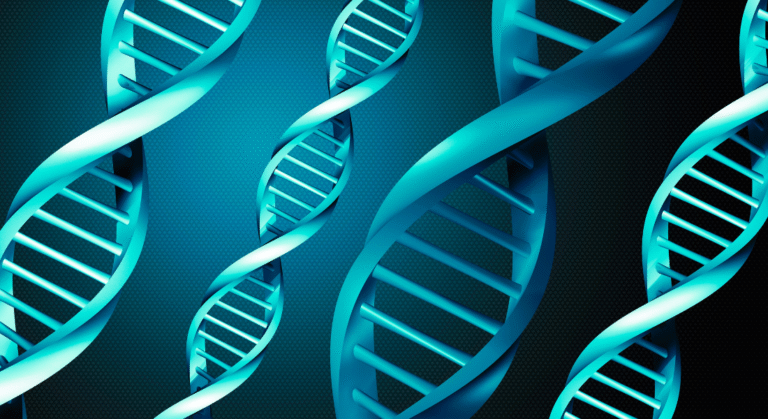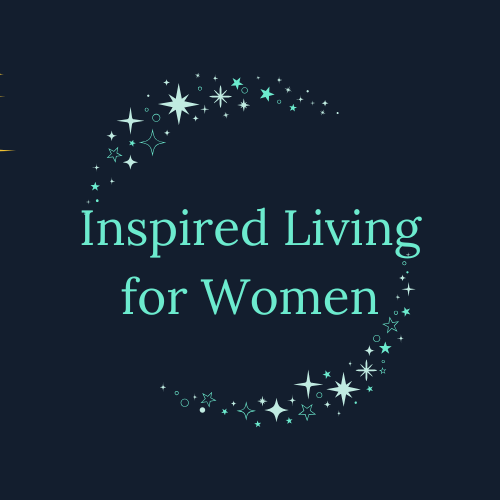
What Genomics Is (and Why It Matters More After 45)
Most of us grew up hearing about “genes” in the context of disease risk or ancestry.
But genomics is bigger than that.
Genomics looks at how your genes work together as a whole system—and how that system interacts with food, stress, sleep, hormones, and the environment you live in every day.
For women 45+, this becomes especially important.
Your body is changing, your hormones are shifting, and the “standard advice” often stops making sense. Genomics offers a way to understand why your body responds the way it does, so you can make more informed choices instead of guessing.
Genetics vs. Genomics (In Plain Language)
You’ll sometimes see “genetics” and “genomics” used interchangeably, but they’re not quite the same.
Genetics often looks at single genes and how changes in those genes may contribute to specific conditions (for example, certain BRCA variants and inherited breast cancer risk).
Genomics looks at the full pattern of many genes together and how they influence everyday processes like:
- How you metabolize caffeine, carbs, and fats
- How efficiently you clear estrogen and other hormones
- How your body handles oxidative stress and inflammation
- How your nervous system responds to stress and recovers
Think of genetics as focusing on one tree.
Genomics is stepping back to look at the entire forest—and how it responds to weather, soil, and seasons.
What Genomics Can Help You Understand
When you use raw DNA data through a genomics lens, you’re not asking,
“Do I have a disease?”
You’re asking questions like:
- How does my body prefer to fuel itself?
- Do I tend to run higher or lower on certain nutrients?
- How does my body usually respond to stress or poor sleep?
- Are there areas where my detox or hormone pathways may need more support?
Where might my cardiovascular, cognitive, or metabolic systems need extra attention as I age?
For women after 45, this often connects to:
- Glucose balance and energy swings
- Weight stability and body composition
- Perimenopause and postmenopause transitions
- Sleep quality and stress recovery
- Long-term heart and brain health
Genomics doesn’t hand you a rigid plan.
It gives you context—so the choices you make are better matched to how your body actually works.
What Genomics Is Not
Genomics can be incredibly powerful, but it has limits. It is not:
- A medical diagnosis
- A guarantee of what will or won’t happen in the future
- A replacement for working with your doctor or care team
- A way to predict every possible health issue
Most consumer DNA tests (like 23andMe, AncestryDNA, Nutrition Genome or SelfDecode) look at selected markers (SNPs), not your entire genome. That means:
- They can highlight tendencies and patterns, not absolute outcomes.
- They are best used for education and prevention-minded insight, not to diagnose, treat, or cure any condition.
Any genomics education or report on this site is meant to help you understand your body, not to take the place of medical care.
How DNA Testing and Raw Data Fit In
If you’ve taken a test through AncestryDNA or 23andMe, you should have access to your raw DNA data file.
AncestryDNA provides ancestry results only, plus a downloadable raw DNA file.
23andMe provides ancestry, selected health/trait reports (depending on the kit), and a downloadable raw DNA file.
There are also companies like SelfDecode and Nutrition Genome that do not provide raw DNA, but instead offer their own testing plus detailed reports within their platforms.
My focus here is on helping you understand and use your raw DNA data—specifically from AncestryDNA and 23andMe—to explore tendencies related to:
- metabolism
- hormones
- detoxification
- cognitive and cardiovascular patterns
- inflammation and oxidative stress
- nutrient needs
From there, you can use these insights to have more informed conversations with your health providers and make choices that better align with your design.
How I Use Genomics for Your Genes by Design
On this site, genomics is used for:
Education: Articles, podcast episodes, and resources that explain how your genes influence things like glucose, hormones, energy, detoxification, methylation, and long-term health.
Reports & Guides: Optional genomic reports that interpret selected genes in the context of nutrition, lifestyle, and prevention-minded support for women 45+.
Mentoring: Optional 1:1 mentoring designed to help you understand your patterns, connect the dots in your results, and apply the insights in a way that fits your life. This is not medical advice—it’s guided education, reflection, and support.
Everything is framed as educational, not diagnostic:
- I don’t diagnose, treat, or manage disease.
- I don’t tell you to stop or change medications.
I focus on helping you understand your tendencies so you can make informed choices and work with your own practitioners more confidently.
If you choose to order a genomic report, you’ll also find linked pages explaining:
- How to download your raw DNA file
- How your data is handled and protected
- What’s included (and not included) in any report
Where to Go Next
You can continue exploring genomics here:
- Order a Genomics Report – if you already have raw DNA data and want an education-focused genomic report.
- Genetic Data Privacy & Disclaimer – how your data is handled and the limits of genomics education.
And if you’d like to go deeper into stories, examples, and gene-by-gene insights, you’ll find more in the Your Genes by Design newsletter and podcast.
